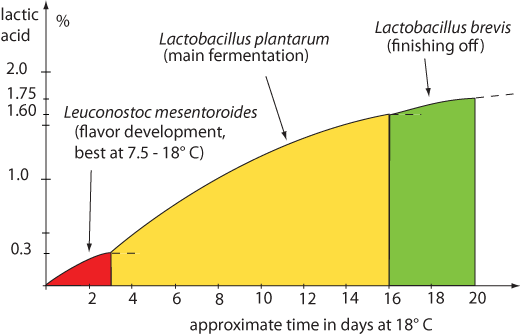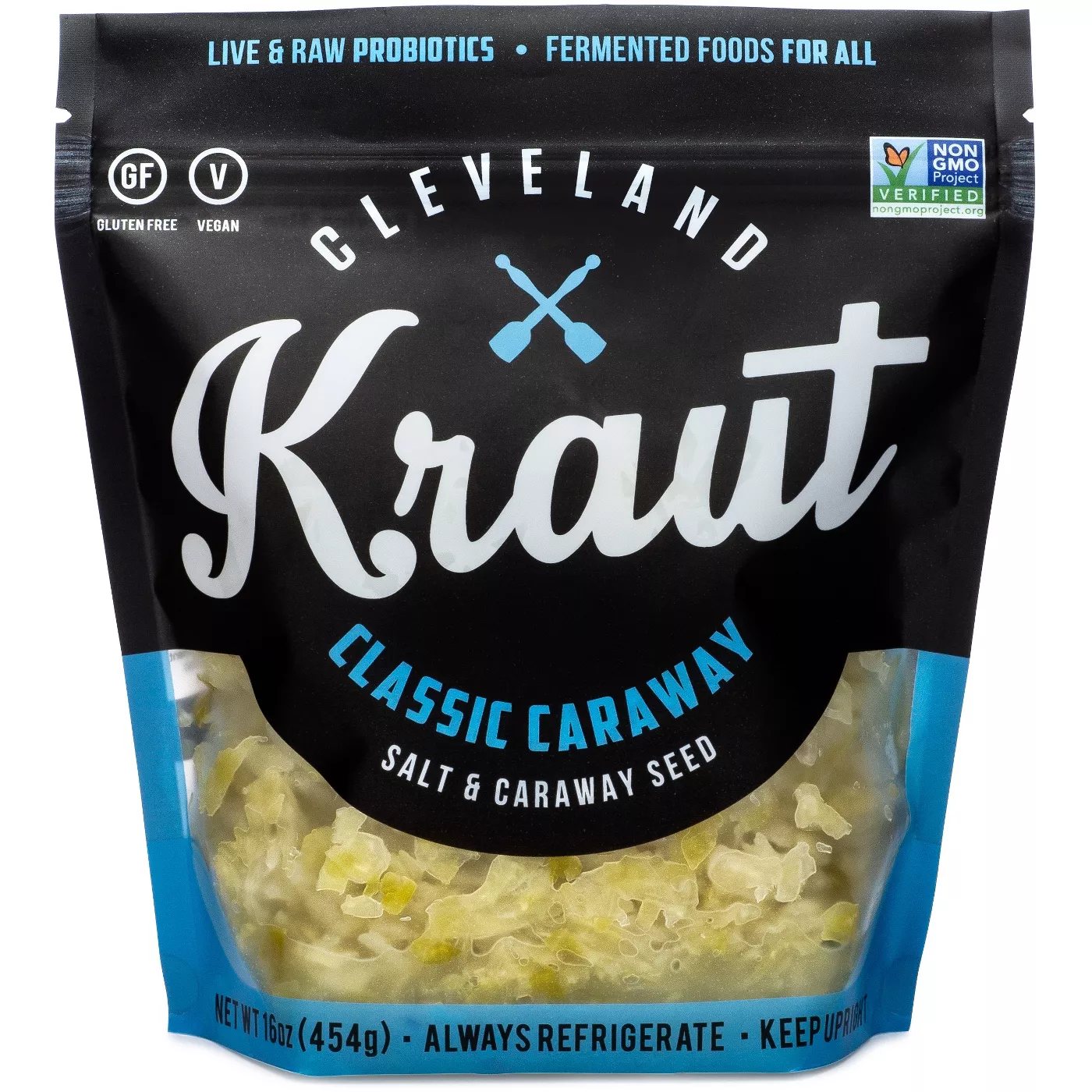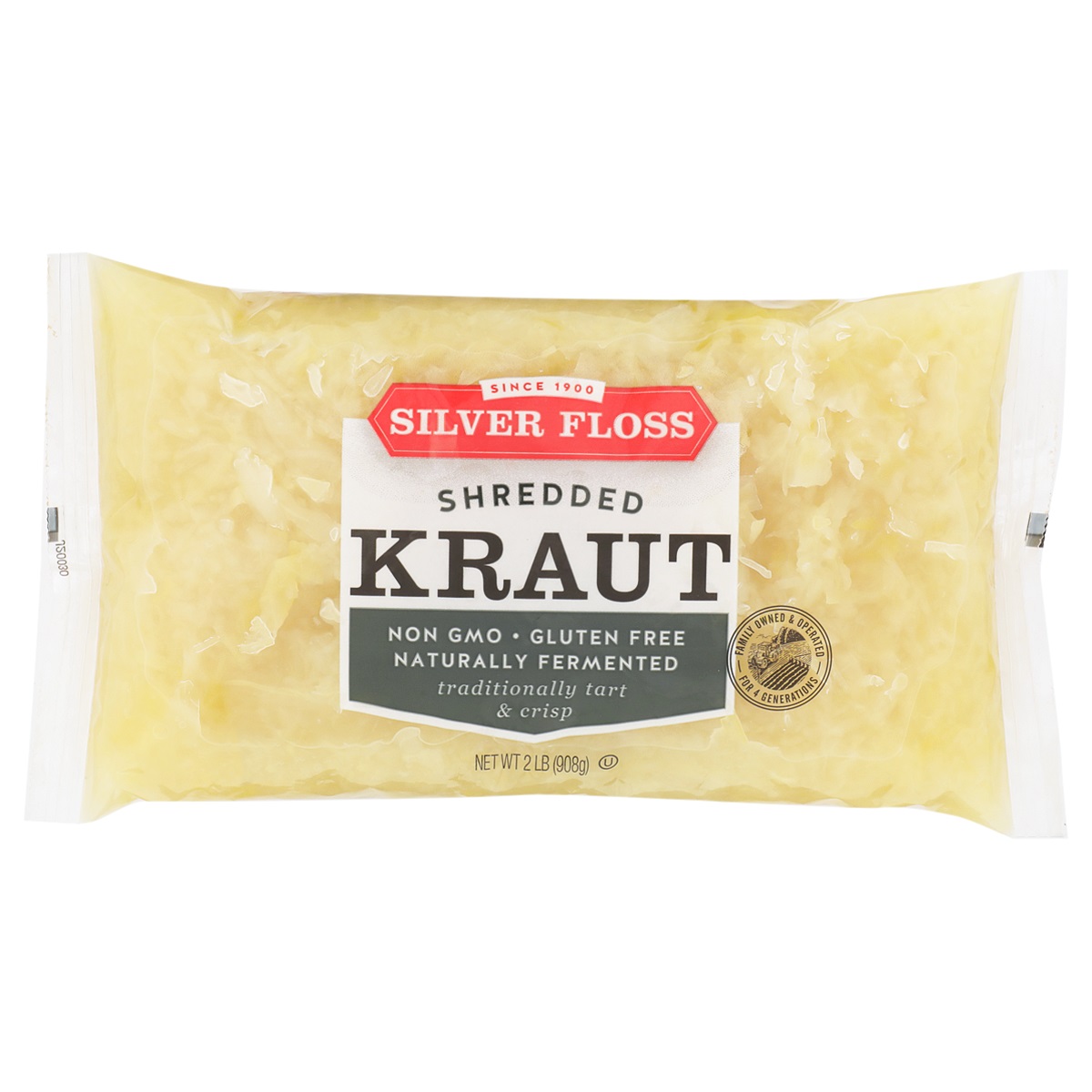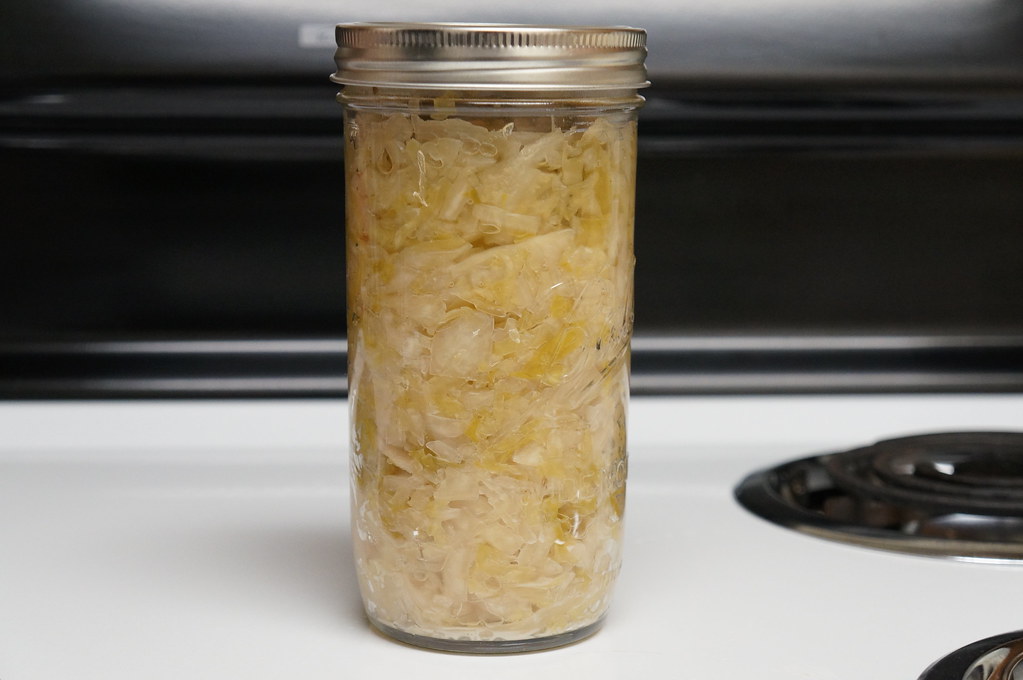Sauerkraut is a traditional German specialty dish that doesn’t only taste great but can have surprisingly beneficial side-effects on your gut. One of the many benefits is the wide range of good bacteria it adds to your gut flora.
But how do you know if your sauerkraut is really probiotic-rich? And which sauerkraut has the most probiotics?
The most probiotics can be found in sauerkraut that has been fermented for at least 3 weeks and has not been processed. The fermentation that occurs when sauerkraut is left at room temperature allows for the growth of beneficial bacteria (probiotics). The longer the sauerkraut is left to ferment, the more probiotic cultures can form.
Sauerkraut that has been processed in any way will have fewer probiotics. Cooking completely destroys the bacteria and even adding vinegar to your sauerkraut may reduce its probiotic content.
Introduction
In this post, I’ll go over which sauerkraut has the most probiotics. We will look at the different factors that lead to the highest probiotic growth in sauerkraut and then evaluate a handful of supermarket brands in terms of probiotic content.
I’ll also share some of my tips for getting the most probiotics out of your home-made sauerkraut. So let’s dig in!
What are probiotics in sauerkraut?
Essentially, probiotics in sauerkraut are tiny microorganisms (cultures, bacteria) that form in the process of fermentation. Sauerkraut ferments because it contains plenty of lactic acid bacteria that ferment the cabbage at around 18 degrees Celcius or 65 degrees Fahrenheit.
The fermentation process has a very specific purpose in sauerkraut: to rapidly proliferate lactic acid-producing bacteria, primarily Lactobacilli, through the food. These Lactobacilli cause the pH to decrease, rendering the environment acidic and inappropriate for the development of unwanted bacteria.
Does all sauerkraut have probiotics?
However, not all sauerkraut has probiotics. There are plenty of store-bought brands of sauerkraut that have been pasteurized, cooked, or left to sit in vinegar. All of these preparation methods will kill off any good (or bad) live cultures.
When making sauerkraut at home you can almost be certain that probiotics will have formed. This is because you can control the time and temperature for your sauerkraut to ferment perfectly. We will see below just how important these two factors are.
What to look for in Sauerkraut (to get the most probiotics)
In order to know what to look for in sauerkraut to get the most probiotics out of each serving let’s look at how these bacteria actually proliferate through the cabbage. Once we know the factors that are most conducive to the forming of probiotics we can rank different sauerkrauts by their likely probiotics content.
The two main factors that determine the growth rate of probiotic bacteria are time and temperature. Generally, the longer the sauerkraut is left to ferment, the more Lactobacilli will be able to form. The colder the room temperature, the longer it takes for the fermentation to occur.

The above graph shows the function of time and temperature in the growth of good bacteria in cabbage. As we can see, the sweet spot is around 16-18 days with a consistent temperature of 18 degrees Celsius.
- Time
One of the most important factors in determining the probiotic content of a specific batch of sauerkraut is the time it was given to ferment. Anything below 2 weeks fermentation will have fewer probiotics than longer-fermented cabbage.
In order to pick the sauerkraut with the most probiotics make sure it has been fermentation at least 2 weeks if not longer. - Temperature
The temperature at which cabbage is left to ferment is another hugely impactful factor on the number of bacteria strains that are able to form. Ideally, we want to leave sauerkraut at room temperature (18° C / 65° F) and make sure that the temperature does not vary too much.
Avoid all sauerkraut that has been exposed to high levels of heat (above 25° C) as this may kill or harm beneficial bacteria strains and reduce the probiotic content.
During the warm summer months, I like to keep my sauerkraut in the basement to make sure it does not get overheated. - Vinegar
Vinegar may kill useful bacteria and reduce the probiotic effects of sauerkraut depending on the amount. When adding vinegar to fermenting cabbage (or after it has fermented) the acetic acid in the vinegar will kill off most bacteria – the good and the bad.
When buying sauerkraut at the supermarket always make sure no vinegar has been added. Also, never add vinegar to your home-made sauerkraut unless you want to kill all live cultures. - Pasteurized / Cooked
Pasteurized or cooked sauerkraut will also be devoid of probiotics. Pasteurization is the process of heating up food briefly to very high temperatures to kill off anything that might cause a food producer or grocery store to be liable. It is the same process that milk undergoes before it is sold in supermarkets.
However, bacteria and probiotics are delicate creatures that cannot survive excessive heat. This means that heating up your sauerkraut in a pot or the microwave will significantly decrease its probiotic levels. - Salt
Always make the sauerkraut has been fermented with enough salt to prevent the growth of bad bacteria. The pH level that is produced by the combination of salt and the proliferation of lactic acid bacteria prevents and bad bugs from growing.
When buying sauerkraut at the grocery store don’t be put off by a higher salt content. It may mean that the cabbage has actually been fermented correctly. When making sauerkraut at home always make sure to use at least a good handful of salt for each pound of cabbage.
The 3 Supermarket Sauerkraut Brands (with the most probiotics)
Now that we know which factors are conducive to a higher content of probiotics in sauerkraut we can for the sauerkraut with the most probiotics. Naturally, you will have the most control over your sauerkraut’s probiotic levels when making it at home.
But if that’s not an option, let’s look at some store-bought alternatives!
Wildbrine Raw Organic Sauerkraut

Wildbrine makes excellent organic products that are naturally fermented; and their sauerkraut is no exception. It is available at most organic grocery stores but also at Costco.
Ingredients
Organic Green Cabbage, Sea Salt, Organic Garlic.
| Amount Per Serving | % Daily Value |
| Calories 5 | |
| Total Fat 0g | 0% |
| Sodium 240mg | 10% |
| Total Carbohydrate 2g | 1% |
| Protein 0g |
Cleveland Kraut Classic

My second pick for store-bought sauerkraut with the most probiotics is Cleveland Kraut Sauerkraut. Made with all-natural ingredients and traditional fermentation this sauerkraut comes close to the home-made classic!
Ingredients
Green Cabbage, Kosher Salt, Caraway Seed.
| Amount per serving | % of Daily Value |
| Added Sugars 0g | 0% |
| Calcium 16mg | 2% |
| Cholesterol 0mg | 0% |
| Dietary Fiber 2g | 7% |
| Iron 0mg | 0% |
| Potas. 23mg | 0% |
| Protein 1g | |
| Saturated Fat 0g | 0% |
| Sodium 460mg | 20% |
| Total Carbohydrate 3g | 1% |
| Total Fat 0g | 0% |
| Total Sugars 2g |
Silver Floss Barrel Cured Krrrrisp Kraut Sauerkraut

Another excellent source of probiotics is Silver Floss’ Barrel Cured Sauerkraut. It has been naturally fermented without any additives or pasteurization and is even available at Walmart!
The only downside is that Sodium Bisulfite has been added as a preservative.
Ingredients
Cabbage, Water, Salt, Sodium Benzoate, and Sodium Bisulfite (as Preservatives).
| Amount per serving | % of Daily Value |
| Total Fat 0g | 0% |
| Saturated Fat 0.0g | 0% |
| Trans Fat 0.0g | 0% |
| Cholesterol 0.0mg | 0% |
| Sodium 160.0mg | 7% |
| Total Carbohydrate 1g | 0% |
| Dietary Fiber 1.0g | 4% |
| Sugars 0.0g | 0% |
| Protein 0.0g | 0% |
Conclusion
Making your own sauerkraut at home is simple and fun and will ensure that you get the most probiotics per serving in your sauerkraut. It also allows you to control the entire process and add flavors as you wish.
When buying supermarket sauerkraut, make sure to choose your brands carefully. Avoid those that have been processed, heated, or added vinegar as this will reduce or negate the probiotic effects sauerkraut provides.
“Sauerkraut Six Weeks Ferment” by ccbarr is licensed under CC BY-SA 2.0

